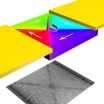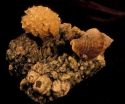(Press-News.org) Pretend play can be fun for preschool children, but a new University of Virginia study, published in a recent online edition of the journal Psychological Bulletin, finds that it is not as crucial to a child's development as currently believed. Pretend play is any play a child engages in, alone, with playmates, or with adults, that involves uses of the imagination to create a fantasy world or situation, such as making toy cars go "vrrooooom" or making dolls talk.
Based on a number of key studies over four decades, pretend play is widely considered by psychologists – and teachers and parents – to be a vital contributor to the healthy development of children's intellect.
However, the new U.Va. study – a thorough review of more than 150 studies – looked for clearly delineated contributions of pretend play to children's mental development, and found little or no correlation.
Much of the previously presented "evidence" for the vitality of pretend play to development is derived from flawed methodology, according to Angeline Lillard, the new study's lead author and a U.Va. professor of psychology in the College of Arts & Sciences. She said testers might have been biased by knowledge that they were testing children who had engaged in adult-directed pretend play prior to testing.
"We found no good evidence that pretend play contributes to creativity, intelligence or problem-solving," Lillard said. "However, we did find evidence that it just might be a factor contributing to language, storytelling, social development and self-regulation."
She said it is often difficult for psychologists to separate whether children who engage in pretend play are already creative and imaginative, or if the pretend play, often encouraged by parents or teachers, actually promotes development.
"When you look at the research that has been done to test that, it comes up really short," Lillard said. "It may be that we've been testing the wrong things; and it may well be that when a future experiment is really well done we may find something that pretend play does for development, but at this point these claims are all overheated. This is our conclusion from having really carefully read the studies."
Lillard emphasized that various elements often present during pretend play – freedom to make choices and pursue one's own interests, negotiation with peers and physical interaction with real objects – are valuable, especially with appropriate levels of adult guidance.
These conditions exist both in pretend play and in other playful preschool activities that encourage children to discover their own interests and talents, such as the method used in Montessori schools.
Pretend play is also important diagnostically for children between 18 months and 2 years old, Lillard said. A complete absence of pretend play among children of that narrow age range could indicate autism, and suggests that such children be evaluated for other signs of the neurological disorder.
A growing problem, she said, is a trend in schools toward intensively preparing children for tests – often supplanting organized and informal playtime, leading to a debate over whether early childhood curricula should include materials and time for pretend play.
"Playtime in school is important," Lillard said. "We found evidence that – when a school day consists mostly of sitting at desks listening to teachers – recess restores attention and that physical exercise improves learning."
Regarding pretend play, she said, "If adults enjoy doing it with children, it provides a happy context for positive adult-child interaction, a very important contributor to children's healthy development."
Stephen Hinshaw, editor of Psychological Bulletin and a professor of psychology at the University of California at Berkeley, said, "The article by Lillard and colleagues is a game-changer – a paragon of carefully-reasoned evidence that will challenge the play-based domination of the early-childhood field for years to come."
###
Lillard's graduate student co-authors are Rebecca Dore, Emily Hopkins, Matthew Lerner, Carrie Palmquist and Eric Smith.
University of Rochester Medical Center scientists believe they are the first to identify genes that underlie the growth of primitive leukemia stem cells, and then to use the new genetic signature to identify currently available drugs that selectively target the rogue cells.
Although it is too early to attach significance to the drug candidates, two possible matches popped up: A drug in development for breast cancer (not approved by the Food and Drug Administration), and another experimental agent that, coincidentally, had been identified earlier by a URMC laboratory as ...
This press release is available in Spanish.(SACRAMENTO, Calif.) — Hispanic children often have undiagnosed developmental delays and large numbers of both Hispanic and non-Hispanic children who first were thought to have developmental delay actually had autism, researchers affiliated with the UC Davis MIND Institute have found.
The study, one of the largest to date to compare development in Hispanic and non-Hispanic children, is published in the journal Autism. The results lead the study authors to recommend increased public health efforts to improve awareness, especially ...
CAMBRIDGE, Mass. (August 28, 2012) –The adult human circulatory system contains between 20 and 30 trillion red blood cells (RBCs), the precise size and number of which can vary from person to person. Some people may have fewer, but larger RBCs, while others may have a larger number of smaller RBCs. Although these differences in size and number may seem inconsequential, they raise an important question: Just what controls these characteristics of RBCs?
This question is particularly relevant for the roughly one-quarter of the population that suffers from anemia, which ...
COLUMBUS, Ohio - If experts thought they knew anything about individual investors, it was this: their emotions lead them to sell winning stocks too soon and hold on to losers too long.
But new research casts doubt on this widely held theory that individual investors' decisions are driven mainly by their feelings toward losses and gains. In an innovative study, researchers found evidence that individual investors' decisions are primarily motivated by their beliefs about a stock's future.
"The story is not about whether an investor hates losing or loves gains – it's not ...
UPTON,NY -- The evolution of digital electronics is a story of miniaturization - each generation of circuitry requires less space and energy to perform the same tasks. But even as high-speed processors move into handheld smart phones, current data storage technology has a functional limit: magnetically stored digital information becomes unstable when too tightly packed. The answer to maintaining the breath-taking pace of our ongoing computer revolution may be the denser, faster, and smarter technology of spintronics.
Spintronic devices use electron spin, a subtle quantum ...
Pity the male of the marine whelk, Solenosteira macrospira. He does all the work of raising the young, from egg-laying to hatching — even though few of the baby snails are his own.
The surprising new finding by researchers at the University of California, Davis, puts S. macrospira in a small club of reproductive outliers characterized by male-only child care. Throw in extensive promiscuity and sibling cannibalism, and the species has one of the most extreme life histories in the animal kingdom.
The family secrets of the snail, which lives in tidal mudflats off Baja ...
On July 8, 2011 the Space Shuttle Atlantis launched for the very last time. On that historic day, as the world watched its last ascent up into orbit and commentators discussed the program's contributions to space flight and scientific research over 20 years, the shuttle helped spawn one last experiment. As the shuttle reached a height of about 70 miles over the east coast of the U.S., it released – as it always did shortly after launch – 350 tons of water vapor exhaust.
As the plume of vapor spread and floated on air currents high in Earth's atmosphere, it crossed through ...
NASA and NOAA satellites continue to provide detailed information on Hurricane Isaac as the storm bears down on the U.S. Gulf coast. NASA's TRMM and Terra satellites captured imagery, and NOAA's GOES-13 satellite provided animations of Isaac's march toward the coast today, Aug. 28.
Residents along the northern Gulf coast are bracing for the arrival of Isaac, which was recently upgraded to a hurricane by the National Hurricane Center as of 1:00 p.m. CDT. At that time, the center of Isaac was located about 55 miles (~85 km) south-southeast of the Mississippi and was moving ...
Tropical Storm Bolaven weakened as it moved north through the cooler waters of the Yellow Sea in the last day, which is good news for North Korea and southeastern China where it is making landfall today, Aug. 28.
On Aug. 27, NASA's Tropical Rainfall Measuring Mission or TRMM satellite monitored the rainfall rates within Tropical Storm Bolaven. At the time TRMM passed over, Bolaven was still a typhoon. TRMM captured rainfall data at 0917 UTC (about 5:17 p.m. Korea local time/5:17 a.m. EDT) and at 12:33 UTC (8:33 p.m. Korea local time/8:33 a.m. EDT). Bolaven has been generating ...
DALLAS – Aug. 28, 2012 – Men who have been treated for prostate cancer, either with surgery or radiation, could benefit from taking aspirin regularly, says a new study that includes a researcher at UT Southwestern Medical Center.
Taking aspirin is associated with a lower risk of death from prostate cancer, especially in men with high risk disease, according to a multicenter study published in today's issue of the Journal of Clinical Oncology. Dr. Kevin Choe, assistant professor of radiation oncology at UT Southwestern, is first author of the paper.
Preclinical studies ...



